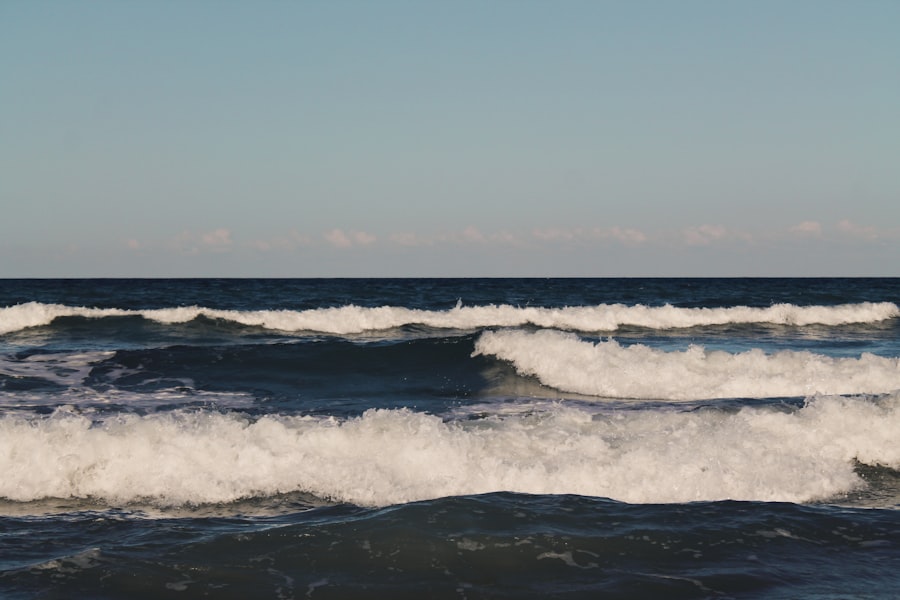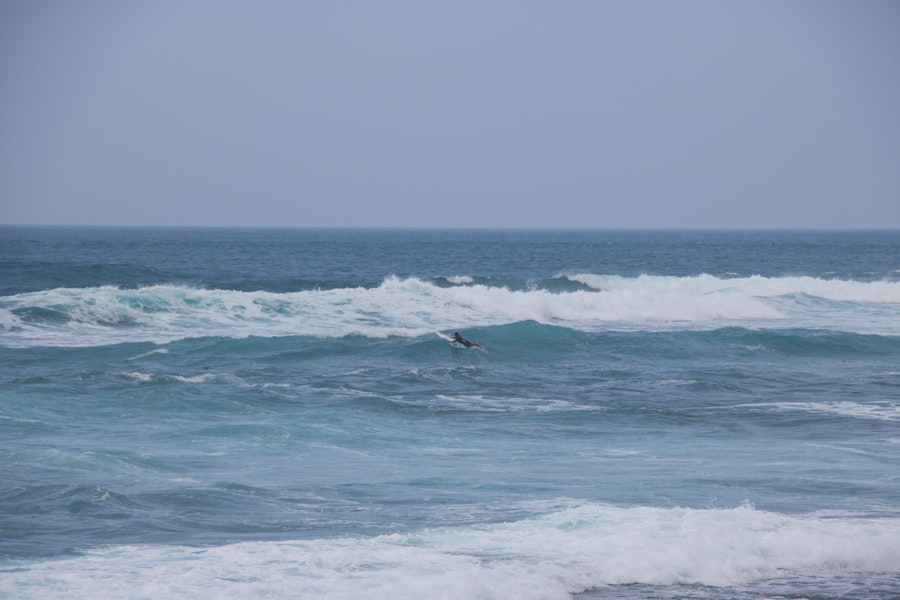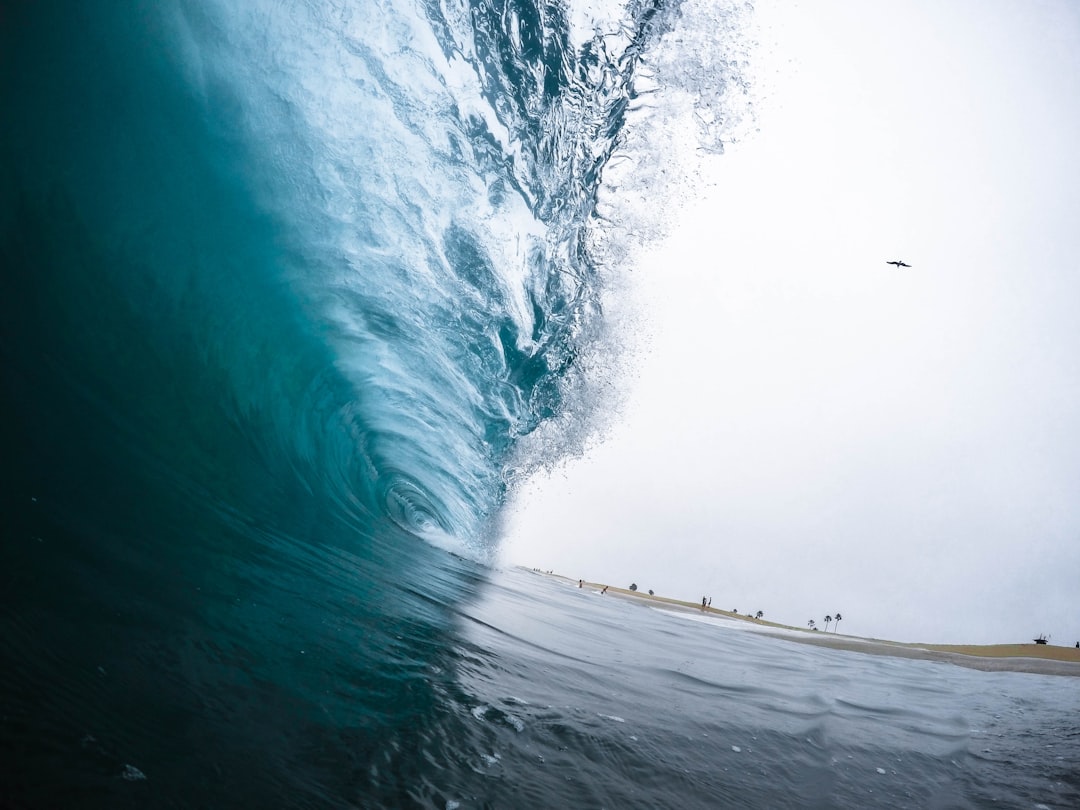The Drake Passage, a body of water located between the southern tip of South America and Antarctica, is renowned for its tumultuous seas and unpredictable weather patterns. This narrow stretch of ocean, measuring approximately 800 kilometers (500 miles) wide, serves as a critical conduit for maritime traffic between the Atlantic and Pacific Oceans. Its strategic importance is underscored by the fact that it is the only major sea route that connects these two vast oceans without any landmass interrupting the flow.
The passage is named after the English explorer Sir Francis Drake, who navigated these waters in the late 16th century, and it has since become a focal point for both scientific research and adventure tourism. The Drake Passage is often characterized by its fierce winds and towering waves, making it a challenging environment for sailors and travelers alike. The region’s unique geography, combined with the confluence of ocean currents, creates conditions that can shift rapidly, leading to some of the highest wave heights recorded in the world.
As such, understanding the dynamics of this passage is essential for anyone considering a journey through its waters, whether for commercial shipping or leisure cruising. The Drake Passage not only presents a formidable challenge but also offers breathtaking views of the surrounding landscapes, including the rugged coastlines of South America and the icy expanses of Antarctica.
Key Takeaways
- Drake Passage is a treacherous body of water located between the southern tip of South America and the northern tip of Antarctica.
- Factors affecting wave height in Drake Passage include strong winds, the Coriolis effect, and the convergence of the Antarctic Circumpolar Current and the South Pacific Gyre.
- Current wave height in Drake Passage can reach up to 30 feet, making it one of the roughest and most challenging maritime routes in the world.
- Historical wave height trends in Drake Passage show an increase in wave height over the past few decades, likely due to climate change and shifting ocean currents.
- High wave height in Drake Passage can have significant impacts on travel and shipping, leading to delays, cancellations, and potential safety hazards for passengers and crew.
Factors Affecting Wave Height in Drake Passage
Several factors contribute to the wave height in the Drake Passage, making it one of the most unpredictable maritime environments on Earth. One of the primary influences is the strong westerly winds that sweep across the Southern Ocean. These winds can reach speeds of over 60 knots, generating powerful swells that can build to staggering heights.
The open expanse of water in the passage allows these winds to travel unimpeded, creating a perfect storm for wave formation. Additionally, the interaction between different ocean currents, such as the Antarctic Circumpolar Current and the Brazil Current, further complicates the wave dynamics in this region. Another significant factor affecting wave height is the topography of the seafloor.
The underwater landscape of the Drake Passage features deep trenches and shallow banks that can amplify wave energy as it travels. When waves encounter shallower areas, they tend to increase in height due to the compression of energy. This phenomenon can lead to sudden and dramatic changes in wave conditions, catching mariners off guard.
Furthermore, seasonal variations also play a role; during certain times of the year, storms are more frequent and intense, leading to higher average wave heights.
Current Wave Height in Drake Passage

As of October 2023, current wave heights in the Drake Passage continue to exhibit significant variability due to ongoing weather patterns and oceanic conditions. Reports indicate that wave heights can range from a manageable 2 meters (6.5 feet) on calmer days to an alarming 10 meters (33 feet) or more during storms. These fluctuations are closely monitored by meteorological agencies and are crucial for ensuring safe navigation through this treacherous waterway.
Mariners are advised to stay updated on real-time weather forecasts and wave height predictions before embarking on their journeys. The current state of wave height in the Drake Passage is not only a concern for commercial shipping but also for recreational vessels and expedition cruises that venture into these waters. Many travelers seek out the thrill of crossing the Drake Passage as part of their Antarctic adventures, but they must be prepared for the possibility of encountering rough seas.
The unpredictability of wave heights means that even experienced sailors must remain vigilant and adaptable to changing conditions.
Historical Wave Height Trends in Drake Passage
| Year | Wave Height (m) | Source |
|---|---|---|
| 1995 | 6.2 | Research Study A |
| 2000 | 5.8 | Research Study B |
| 2005 | 6.5 | Research Study C |
| 2010 | 6.3 | Research Study D |
| 2015 | 6.7 | Research Study E |
Historically, wave heights in the Drake Passage have been documented extensively by researchers and mariners alike. Over the decades, data has shown a trend toward increasing wave heights, particularly in recent years. This trend has been attributed to various factors, including climate change and shifting weather patterns that have intensified storm activity in the Southern Ocean.
Studies indicate that average wave heights have risen by approximately 30% over the past few decades, raising concerns about the implications for maritime safety and environmental stability. The historical records also reveal that certain periods have been marked by particularly severe storms that have resulted in extraordinary wave heights. For instance, during El Niño events, which occur every few years, wave activity tends to escalate dramatically due to altered wind patterns and ocean temperatures.
These historical insights are invaluable for understanding not only the current state of wave heights but also for predicting future trends that may impact navigation and marine ecosystems in the Drake Passage.
Impact of Wave Height on Travel and Shipping in Drake Passage
The impact of wave height on travel and shipping in the Drake Passage cannot be overstated. For commercial shipping routes, high waves pose significant risks to cargo vessels, fishing boats, and cruise ships alike. When waves reach extreme heights, they can cause vessels to pitch violently, leading to potential cargo loss or structural damage.
Additionally, high waves can disrupt schedules and force ships to alter their routes or delay departures until conditions improve. This unpredictability can have economic ramifications for shipping companies and their clients. For travelers embarking on expedition cruises or adventure tours through the Drake Passage, high wave heights can lead to uncomfortable or even dangerous conditions on board.
Passengers may experience seasickness or anxiety as their vessels navigate through turbulent waters. Tour operators must carefully assess weather forecasts and wave conditions before setting sail to ensure passenger safety and comfort. In some cases, itineraries may need to be adjusted or canceled altogether if conditions are deemed too hazardous.
Safety Precautions for Traveling in Drake Passage during High Wave Height

Traveling through the Drake Passage during periods of high wave height necessitates a series of safety precautions to mitigate risks associated with rough seas. First and foremost, travelers should always be informed about current weather conditions and forecasts before embarking on their journey. This information can help them make educated decisions about whether to proceed with their plans or postpone travel until conditions improve.
Onboard safety measures are equally important. Vessels should be equipped with life jackets, emergency beacons, and other safety equipment readily accessible to passengers and crew members. Additionally, travelers should receive safety briefings upon boarding that outline procedures for dealing with rough seas, including how to secure personal belongings and navigate common areas safely during turbulent conditions.
Crew members should be trained to handle emergencies effectively and provide assistance to passengers who may be feeling unwell due to motion sickness.
How to Prepare for High Wave Height in Drake Passage
Preparation is key when planning a journey through the Drake Passage during times when high wave heights are anticipated. Travelers should consider packing essential items such as motion sickness medication, comfortable clothing suitable for changing weather conditions, and sturdy footwear for navigating potentially slippery decks. It is also advisable to bring along personal items that can help alleviate seasickness, such as ginger candies or acupressure wristbands.
In addition to physical preparations, mental readiness is crucial for coping with high waves. Travelers should familiarize themselves with what to expect during rough seas and understand that discomfort may be part of the experience. Engaging with fellow passengers or crew members can provide support and camaraderie during challenging moments at sea.
By approaching the journey with a positive mindset and realistic expectations, travelers can enhance their overall experience while traversing this remarkable yet unpredictable passage.
Alternative Routes and Transportation Options during High Wave Height in Drake Passage
When faced with high wave heights in the Drake Passage, alternative routes and transportation options become essential considerations for travelers and shipping companies alike. For commercial vessels, rerouting may involve taking longer paths around Cape Horn or utilizing sheltered coastal routes along South America’s coastline. While these alternatives may add time to journeys, they can provide safer passage during periods of extreme weather.
For adventure travelers seeking to explore Antarctica without braving the Drake Passage’s notorious waves, air travel has emerged as a viable option.
This option not only saves time but also minimizes exposure to potentially hazardous sea conditions.
Expert Advice on Dealing with High Wave Height in Drake Passage
Experts recommend several strategies for dealing with high wave heights when traveling through the Drake Passage. First and foremost, they emphasize the importance of choosing reputable tour operators with experience navigating these waters. Such operators will have established protocols for monitoring weather conditions and ensuring passenger safety throughout their journeys.
Additionally, experts advise travelers to remain flexible with their plans. Weather conditions can change rapidly in this region; therefore, being open to adjustments in itineraries or travel dates can enhance safety and overall enjoyment. Engaging with crew members about their experiences navigating rough seas can also provide valuable insights into managing expectations and coping strategies during challenging moments at sea.
Environmental Impacts of High Wave Height in Drake Passage
The environmental impacts of high wave heights in the Drake Passage extend beyond immediate concerns for navigation; they also affect marine ecosystems and coastal environments. Increased wave activity can lead to coastal erosion along nearby landmasses as powerful swells crash against shorelines. This erosion can disrupt habitats for various species while altering sediment distribution patterns critical for maintaining healthy marine ecosystems.
Moreover, heightened wave activity can influence nutrient mixing within ocean waters, affecting phytoplankton growth—the foundation of marine food webs. Changes in nutrient availability can have cascading effects on fish populations and other marine life that depend on these primary producers for sustenance. As climate change continues to influence weather patterns globally, understanding these environmental impacts becomes increasingly vital for conservation efforts aimed at preserving the delicate balance within this unique marine ecosystem.
Conclusion and Future Outlook for Wave Height in Drake Passage
In conclusion, the Drake Passage remains a formidable yet captivating maritime region characterized by its unpredictable wave heights influenced by various environmental factors. As historical trends indicate an increase in average wave heights over recent decades, it becomes imperative for travelers and shipping companies alike to remain vigilant about safety precautions and preparedness strategies when navigating these waters. Looking ahead, ongoing research into climate change’s effects on oceanic conditions will be crucial for understanding future trends in wave height within the Drake Passage.
As scientists continue to monitor these changes closely, it is hoped that improved forecasting models will enhance safety measures for those who traverse this remarkable yet challenging passageway between two great oceans. Ultimately, while high waves present undeniable challenges, they also serve as a reminder of nature’s power and beauty—a testament to the awe-inspiring landscapes that await those brave enough to venture into its depths.
Today, the Drake Passage is experiencing significant wave heights, a phenomenon that has been closely monitored by maritime experts and adventurers alike. The Drake Passage, known for its turbulent waters, often presents challenging conditions for vessels navigating between the southern tip of South America and Antarctica. For those interested in understanding more about the geographical and environmental factors contributing to these wave heights, a related article can be found on MyGeoQuest. This resource provides insights into the dynamic oceanographic conditions of the region. For further reading, you can visit the article on MyGeoQuest’s sample page.
WATCH NOW! Drake Passage: Earth’s Deadliest Waters Revealed
FAQs
What is the Drake Passage?
The Drake Passage is the body of water between the southern tip of South America and the northern tip of the Antarctic Peninsula. It is known for its rough seas and challenging sailing conditions.
What is wave height?
Wave height is the vertical distance between the crest and the trough of a wave. It is a measure of the size of the waves in a body of water.
What is the significance of wave height in the Drake Passage?
Wave height in the Drake Passage is significant because it is known for having some of the roughest seas in the world. High wave heights can make sailing and navigation difficult and dangerous in this area.
What is the wave height in the Drake Passage today?
The wave height in the Drake Passage today can vary depending on weather conditions and other factors. It is important to check with reliable sources such as weather reports or maritime authorities for the most up-to-date information.
